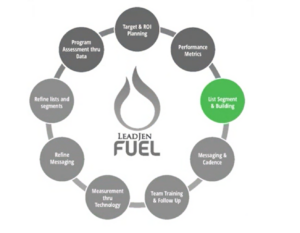

3 easy tips to supercharge SDR performance – 52 weeks of prospecting success
How many of us have our day planned out before sitting down at our desk in the morning? Many SDRs do not. They know the general activity metrics they want to achieve and then set out with an ad-hoc approach to select who to call and in what order. This results in an SDR who is constantly switching context.
I’ve shadowed many teams that approach their day in this manner. They have extremely sharp SDRs who are provided performance expectations without a process or structure to approach leads. This ad-hoc approach leads to watered-down messages and lower productivity, and ultimately results in lower conversions and a higher CPL.
If you have already invested in clean data for your SDRs (really clean data with ideal titles, and correct phone numbers and email addresses), then doing one easy thing will make a huge difference in the success of your team: segmenting data in an intelligent way. See this blog and this blog about why this is important.
- Start by grouping “like” leads together. Identify common characteristics of leads. I recommend grouping by lead source, industry, title path or size. With these groupings, SDRs can making the message more relevant. Taking time to structure this on the front end allows you to draw better conclusions about the success of SDR teams. This will also allow teams to be more productive because they can do call prep for a group of leads instead of prepping for one-off calls.
- Build an intentional call cadence. The structure of segments lends itself to a measured approach for follow-up. Don’t rely on anecdotal feedback about what works. Put a call plan in place and measure each subsequent call.
- A/B test the message by segment. Once the segments are created, the structure is in place to evaluate the message more closely. Take an individual segment and break it into two test groups and test two different messages with different value statements, customer examples and metrics.
Happy calling. Smart Prospecting!
Originally posted by Jenny Vance